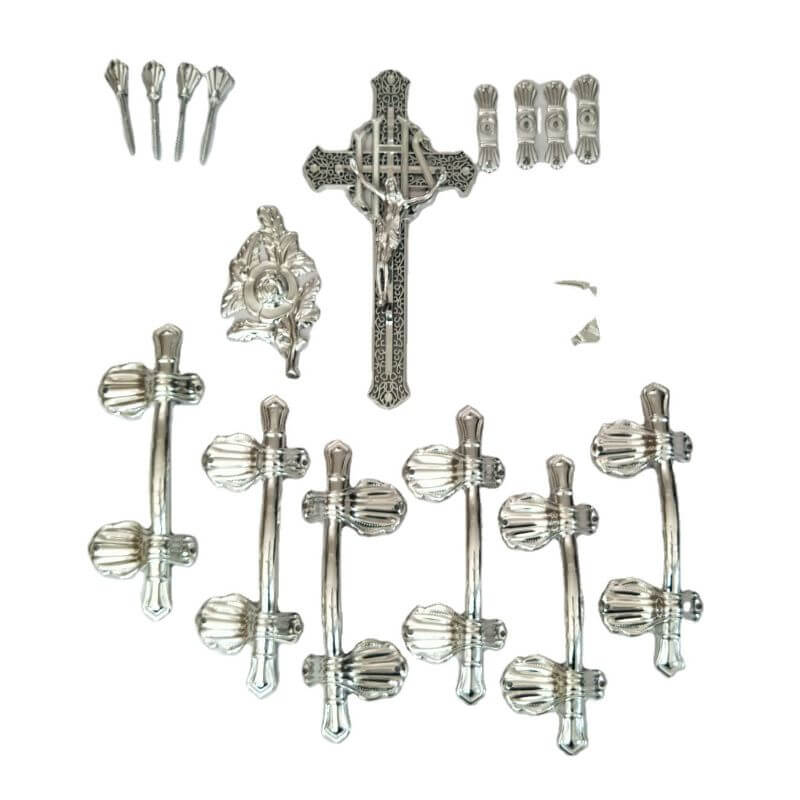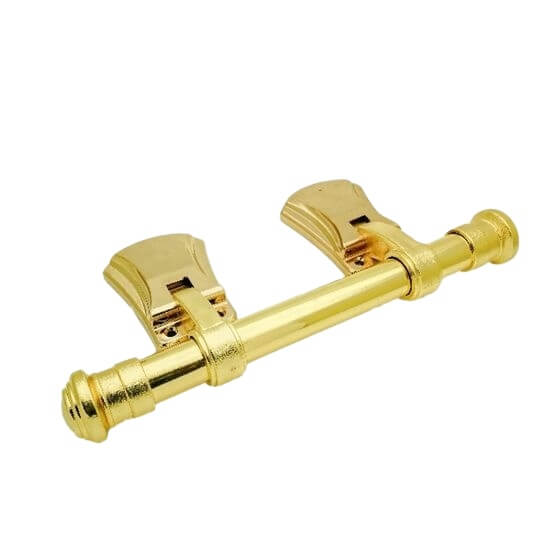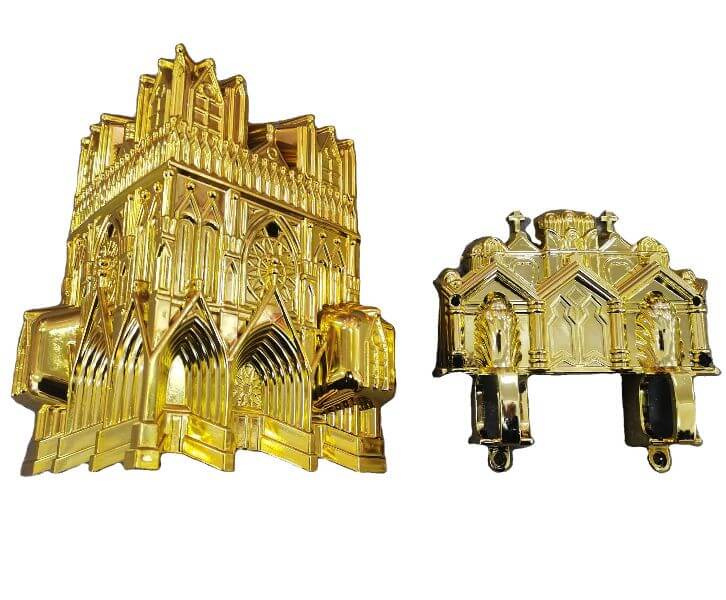Casket hardware (coffin hardware parts)refers to the tools and materials used to construct, open, and close a casket. It includes items such as handles, corners, shutters, hinges, latches, locks, and lid supports. Quality casket hardware is designed to provide a permanent seal that ensures the deceased remains securely contained inside the unit. The quality and type of hardware used varies depending on whom it is intended for – such as family members or professional funeral workers – as well as the type of casket itself. Casket hardware typically ranges from basic and economical models for regular use to more sophisticated structures for better-built coffins.
If you’re looking for reliable and quality coffin hardware, then look no further than Coffin Hardware. With years of experience providing coffin-building supplies to professionals around the world, we guarantee satisfaction and quick shipping on all orders. Our products are made from durable and high-strength metals that can withstand wear-and-tear over long durations. Order your professional-grade coffin hardware today—you won’t regret it!

Types of Coffin/Casket Hardware:
We provide all kind of Coffin/Casket hardware used to construct and repair wooden coffins and caskets. This hardware typically consists of hinges, handles, screws, nuts, latches, knobs, and plates made of quality materials such as brass or steel. This hardware is necessary to provide privacy and dignity for the remains inside the coffin or casket.

Casket Handles
Look no further than the Wholesale Universal Casket Handles Kit. This kit provides a range of handles, hinges, trimmings and other hardware items to ensure you have everything needed to assemble any size or style of casket.

Casket Corners
The Casket Corners and Life Symbols Casket Corners Plaque is a beautiful and meaningful way to memorialize a loved one. This plaque features engraved images of life symbols along with the traditional casket corners design.

Casket interior kit
Casket interior kit funeral equipment suppliers is a reliable and reputable company specializing in the provision of high-quality, specialized funeral equipment for both personal and business use. With an extensive range of caskets and other associated products, they are equipped to meet all your requirements for a respectful and meaningful end-of-life service.
Something You Might Need To Know About Casket Hardware:
- How To Write A Meaningful Eulogy: Tips & ExamplesWriting a eulogy can be a challenging task, especially when the loss of a loved one is still fresh. However, it is also an opportunity to honor and celebrate their life, to acknowledge their impact on the world, and to reflect on the memories and experiences shared with them. A meaningful eulogy can provide comfort…
- Planning A Parent’s Funeral: A Guide For 2023Losing a parent is a difficult and emotional experience for anyone. Planning their funeral can add to the already overwhelming grief and stress. However, it is an important step in the grieving process and can provide closure and a sense of peace. This guide aims to provide a comprehensive overview of funeral planning for those…
- Why Does Rain Follow Funerals? Cultural Beliefs And Superstitions ExplainedFunerals are solemn occasions marked by grief and mourning, and it is often said that rain follows these events. This phenomenon has sparked curiosity and speculation about its underlying meaning and cultural significance. While some may dismiss it as mere coincidence, others believe that rain holds symbolic value and reflects the emotions and spiritual state…
- Why Legs Are Covered In Caskets: The Surprising ReasonsOpen casket funerals are a common practice in many cultures and religions, providing loved ones with the opportunity to pay their final respects to the deceased. However, it’s also common to cover the legs of the deceased during these ceremonies. This tradition has been passed down through generations, with few people understanding the reasons behind…
- Why Do They Cover The Face Before Closing A Casket: Understanding The Rituals And Superstitions.The act of covering the face before closing a casket is a longstanding tradition in funeral practices that has been observed across cultures and religions. While it may seem like a simple act, there are several reasons why it is done. From old rituals and superstitions to the practical preparation of the body by embalmers,…
- Who Pays For The Funeral Reception? Tips To Cut CostsLosing a loved one is a challenging experience that can bring about a range of emotions, including sadness and grief. In addition to the emotional toll, families are often faced with the daunting task of planning and paying for a funeral reception. This event is an essential part of the mourning process, providing an opportunity…
FAQ:
What are handles on a casket called?
Handle, which can also be referred to as a bar or handlebar, is located on caskets and serves as a point of grip for pallbearers. Three types of handles are typically used: swing bar, stationary bar, and bail handle. A swing bar features an arm with a hinged design allowing it to move, while the stationary bar lacks such movement capability. By far the most popular type of casket handle is the bail handle – this version has two separate handles that are linked together by rings.
What are the parts of a casket?
1.Capsule: The casket is usually made of a rectangular capsule, with a secure lid on top, and handles on each end to carry the casket.
2.Handlebars: Handlebars are located on either side of the casket to facilitate carrying by pallbearers.
3.Lining: The casket is lined with fabric of various materials, usually in white, ivory or pastel colors, such as crepe and velvet fabrics.
4.Rails: Inside the lid are two rails that help the lid stay in place when closed. They can also help restrain movement for larger bodies.
5.Vault: An outer covering called a vault may be added for further protection from dirt and water seepage (not typically sold in retail stores). It is made of heavy, waterproof material such as concrete or metal alloys, fitted tightly around the exterior of the casket like an outer shell.
6.Sealant: A plastic sealant may be molded around the edges of the lid to provide an air-tight seal around the body to protect it against deterioration and degradation caused by exposure to air and moisture within a vault or burial site (sometimes referred to as a “sealed” coffin).
What are casket handles made of?
Casket handles are typically made of metal but can also be wood, porcelain, or ceramic.
